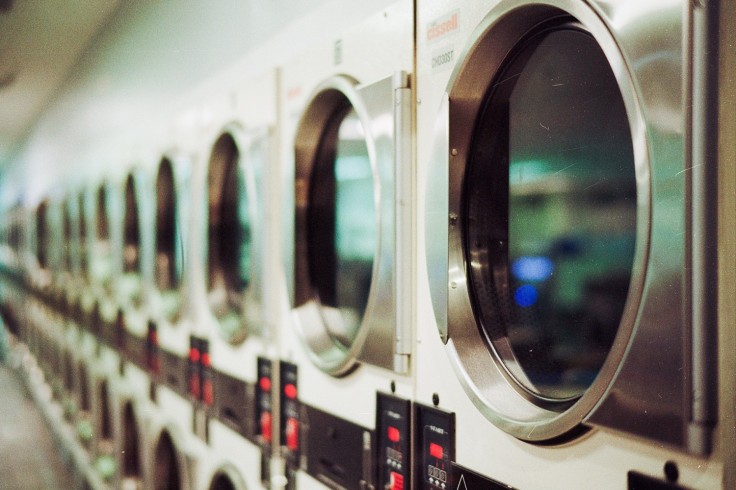
In recent years, the laundry industry has witnessed significant advancements in technology, revolutionizing its operational efficiency. One such innovative technology is Radio Frequency Identification (RFID). RFID for laundry has proven to be a game-changer, streamlining laundry management processes and enhancing overall productivity.
This article explores the ins and outs of RFID technology in the context of laundry management, shedding light on how it works and its impact on the industry.
Understanding RFID Technology
What is RFID?
RFID, short for Radio Frequency Identification, is a wireless technology that employs electromagnetic fields to automatically identify and track objects. It consists of three key components: RFID laundry tags, RFID readers, and a backend database system.
Components of RFID System
RFID Tags: These are small, battery-free devices containing an integrated circuit and an antenna. They can be attached to laundry items, enabling them to be uniquely identified.
RFID Readers: The readers emit radio signals, which are received by the RFID tags, powering them momentarily. The tags respond with their unique identification data.
Backend Database System: The RFID reader transmits the tag data to a centralized database, where it is processed and stored for future reference.
How RFID Works
When a batch of laundry enters the facility, each item is affixed with an RFID tag. As the laundry progresses through various stages of the cleaning process, RFID readers capture the tag information, such as item type, size, and unique identifier. This data is then logged into the backend system, allowing staff to monitor and track each item's location and status in real-time.
RFID in Laundry Management
Benefits of RFID in Laundry Industry
Implementing RFID technology in laundry management offers several advantages:
Enhanced Inventory Management: RFID allows for accurate and automated inventory tracking, reducing the risk of lost or misplaced items.
Improved Workflow: With real-time tracking, laundry facilities can optimize their workflow, ensuring timely processing and delivery of clean laundry.
Cost Efficiency: RFID streamlines operations, leading to reduced labor costs and increased overall efficiency.
Error Reduction: The automated nature of RFID minimizes human errors in laundry sorting and tracking.
RFID Laundry Tags and their Features
RFID laundry tags are designed to withstand the harsh conditions of the laundry process. They are water-resistant and durable, ensuring their longevity even after multiple wash cycles. Additionally, these tags come in various forms, including adhesive labels and sew-in labels, catering to different laundry item types.
RFID Laundry Process Workflow
The RFID laundry process typically involves the following steps:
Tagging: RFID tags are attached to individual laundry items, each assigned a unique identification number.
Sorting: RFID readers identify and sort laundry items based on their unique tags, streamlining the sorting process.
Washing: Laundry items proceed through the cleaning process while being continuously tracked by RFID technology.
Drying and Folding: RFID ensures accurate tracking during the drying and folding stages, preventing any mix-ups.
Delivery: Clean laundry is promptly delivered to the correct customers, with RFID enabling precise tracking and delivery confirmation.
RFID Laundry Tags Manufacturer
Importance of Choosing the Right Manufacturer
Selecting a reliable RFID laundry tags manufacturer is crucial for the successful implementation of RFID technology in laundry management. A reputable manufacturer ensures the quality and durability of the RFID tags, contributing to the overall efficiency of the laundry process.
Factors to Consider when Selecting RFID Laundry Tags
Durability: Ensure that the RFID tags can withstand the harsh laundry environment, including exposure to water and detergents.
Compatibility: Verify that the RFID tags are compatible with the laundry facility's existing RFID infrastructure.
Read Range: Consider the optimal read range of the RFID tags, depending on the laundry facility's size and layout.
Cost-effectiveness: Balance the cost of the RFID tags with the potential benefits they offer to the laundry facility.
Implementation of RFID in Laundry Facilities
Steps to Implement RFID Technology
Conduct a Feasibility Study: Assess the laundry facility's requirements and determine the scope of RFID implementation.
Infrastructure Setup: Install RFID readers at key points within the laundry facility and integrate them with the backend database system.
Employee Training: Train staff on the proper use of RFID technology to ensure seamless adoption.
Testing and Integration: Conduct thorough testing of the RFID system to identify and address any issues before full-scale implementation.
Overcoming Challenges in RFID Adoption
While RFID technology offers significant benefits, its adoption may face challenges, including initial costs, staff resistance to change, and technical complexities. By addressing these challenges proactively, laundry facilities can successfully integrate RFID into their operations.
Conclusion
RFID technology has transformed laundry management, offering unprecedented levels of efficiency, accuracy, and cost-effectiveness. Through the use of RFID laundry tags, facilities can optimize their workflows, reduce errors, and deliver superior customer service. As the technology continues to evolve, the laundry industry can expect even more remarkable advancements in the years to come.









